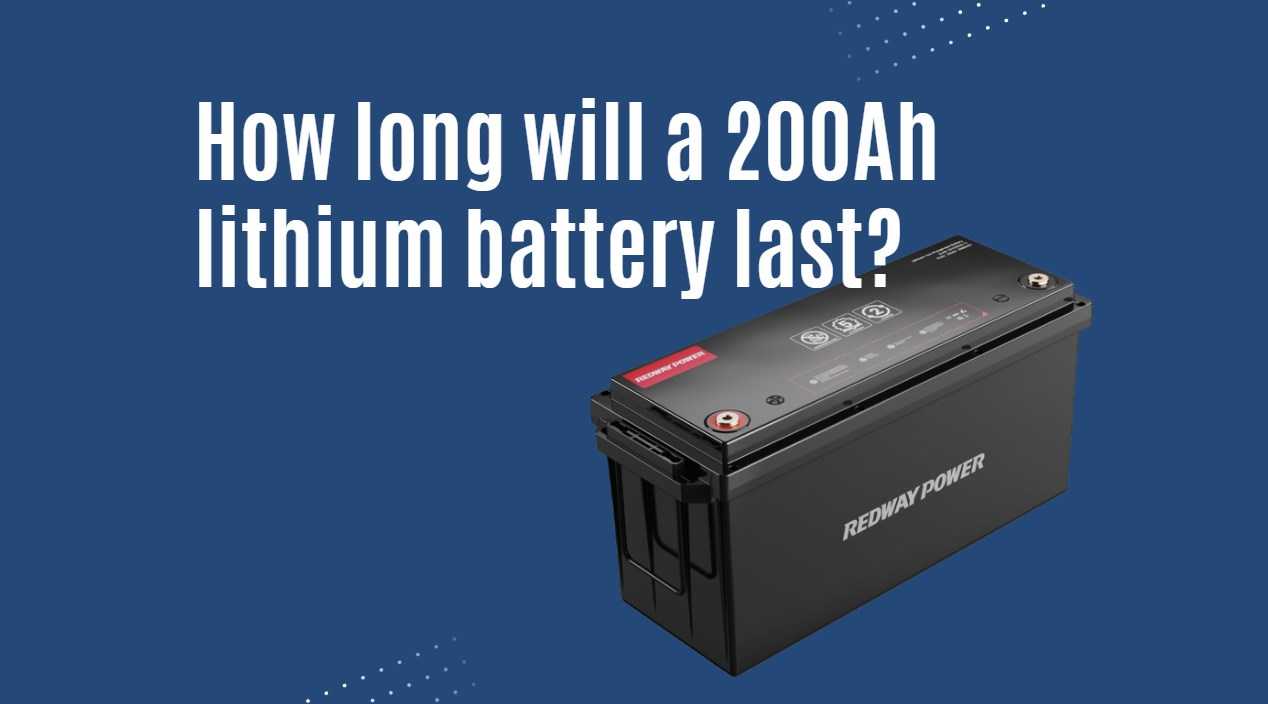When considering how long a 200Ah lithium battery will last, it’s essential to factor in various elements such as load demand, temperature conditions, and maintenance practices. Generally, users can expect this type of battery to provide reliable service for anywhere from 5 to 15 years with proper care.
How Long Will a 200Ah Lithium Battery Last?
A 200Ah lithium battery typically lasts between 5 to 15 years, depending on its usage patterns and maintenance practices. With proper care, these batteries can endure numerous charge cycles while maintaining efficiency.
What Factors Affect the Lifespan of a 200Ah Lithium Battery?
Several factors influence the lifespan of a lithium battery:
Wholesale lithium golf cart batteries with 10-year life? Check here.
- Depth of Discharge (DoD): Regularly discharging the battery deeply can reduce its overall lifespan.
- Temperature Conditions: Extreme heat or cold can negatively impact performance and longevity.
- Charging Practices: Using appropriate charging methods is crucial for maintaining battery health.
How Does Load Demand Influence Battery Duration?
The load demand directly affects how long a battery will last; for example, if you connect devices that draw significant power, such as an appliance requiring 100 amps, your battery will deplete much faster than if you were using low-power devices.Chart: Runtime Calculation Based on Load Demand
| Device Load (Amps) | Estimated Runtime (Hours) |
|---|---|
| 10 Amps | Approximately 16 hours |
| 20 Amps | Approximately 8 hours |
| 50 Amps | Approximately 3.2 hours |
| 100 Amps | Approximately 1.6 hours |
What Is the Typical Cycle Life of a 200Ah Lithium Battery?
Lithium batteries generally have a cycle life ranging from approximately 3000 to 5000 charge cycles before their capacity significantly degrades, making them more durable compared to traditional lead-acid batteries.
Want OEM lithium forklift batteries at wholesale prices? Check here.
How Do Temperature Conditions Affect Lithium Battery Performance?
Temperature plays a critical role in lithium battery performance; high temperatures can accelerate degradation while low temperatures may reduce effective capacity temporarily, impacting overall runtime.
What Are the Best Practices for Maintaining Lithium Batteries?
To extend the life of your lithium batteries:
- Avoid deep discharges; maintain a DoD between 20% and 80%.
- Store batteries in moderate temperature conditions.
- Use quality chargers designed for lithium technology.
How Can You Calculate Runtime for a 200Ah Lithium Battery?
To calculate runtime:
- Determine the wattage of your device.
- Use the formula:
Runtime hours =Battery Capacity Ah ×Battery Voltage V / Device Wattage W
For example, using a device that draws 100W with a fully charged 12V battery:
What Are the Advantages of Using Lithium Batteries Over Lead-Acid?
Lithium batteries offer several advantages:
- Longer lifespan and more charge cycles.
- Higher energy density leading to lighter weight.
- Faster charging times compared to lead-acid batteries.
What Are the Environmental Considerations for Lithium Batteries?
Lithium batteries require responsible recycling due to their chemical components; improper disposal can lead to environmental hazards, making it essential to follow local regulations regarding battery disposal.
How Do Different Charging Methods Affect Battery Life?
Charging methods significantly influence battery longevity; smart chargers that match lithium chemistry help optimize charging cycles and prevent overcharging, which can damage cells.
What Is the Cost Comparison Between Lithium and Lead-Acid Batteries?
While lithium batteries have a higher upfront cost compared to lead-acid options, their longer lifespan and lower maintenance needs often make them more cost-effective in the long run.
Expert Views:
“Understanding how long a 200Ah lithium battery will last involves recognizing various influencing factors—proper maintenance and usage practices are key to maximizing performance and lifespan.”
Testing the 200Ah LiFePO4 Lithium Battery: Performance, Value, and Longevity
FAQ Section
- Can I use my lithium battery until it’s completely discharged?
No, it’s recommended to avoid deep discharges as they can shorten battery life; aim to recharge before reaching low levels. - How often should I charge my lithium battery?
Charge your lithium battery regularly based on usage; ideally maintain between a state of charge of about 20% to 80%. - What should I do if my lithium battery is not holding charge?
Check for potential issues such as temperature extremes or faulty connections; if problems persist, consider consulting with an expert or replacing the battery.






